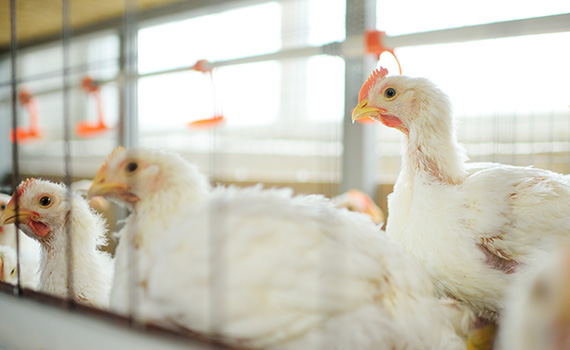Study questioning purity of avian reovirus samples has lab and field implications

Selecting pure avian reovirus (ARV) cultures is extremely important in pathogenicity and antigenicity studies, as well as in the creation of autogenous vaccines. But in reality, many samples don’t stand up to close scrutiny, according to researchers.
Using RNA and DNA extraction with whole-genome sequencing, 79 samples from broiler chickens with tenosynovitis were analyzed by scientists at University of California–Davis School of Veterinary Medicine. This revealed that 91% of samples contained at least one other virus, while 60% contained more than one ARV genotype.
Different body parts, different viral communities
Avian adenovirus was detected in 91% of samples tested, while ARV was detected in 68% of samples, astrovirus in 52% and parvovirus in 25%, Sofía Egaña-Labrín, the lead researcher for the work, explained.
The isolates were largely taken from tendons, with smaller numbers taken from hearts and intestines. Over the course of the study, all virus types were noted in isolates derived from tendons and hearts, with half the heart isolates testing positive for all three types — parvovirus, astrovirus and rotavirus. In the case of those from intestines, all viruses but parvovirus were observed, with all samples testing positive for rotavirus.
“Seven of the isolates tested positive for all five viruses. Interestingly, all of these isolates were obtained from tendons,” Egaña-Labrín added.
Test accuracy, vaccine quality queried
The presence of multiple genotypes of ARV in isolates suggests possible co-infection, Egaña-Labrín said. This adds further evidence to support previous research cited by her team, highlighting co-infection with two ARVs in layers.
“It is not well understood how concomitant viruses and ARV variant co-infections can shape the clinical picture in chickens,” Egaña-Labrín said. But the accuracy of tests to assess pathogenicity and antigenicity, and the quality of autogenous vaccines, is cast in doubt.
Egaña-Labrín said further steps to determine the purity of samples were necessary.
“This information adds importance to ARV isolate screening before characterization or selection of these isolates for autogenous vaccine production.”
Posted on November 1, 2021
 We’re glad you’re enjoying
We’re glad you’re enjoying










